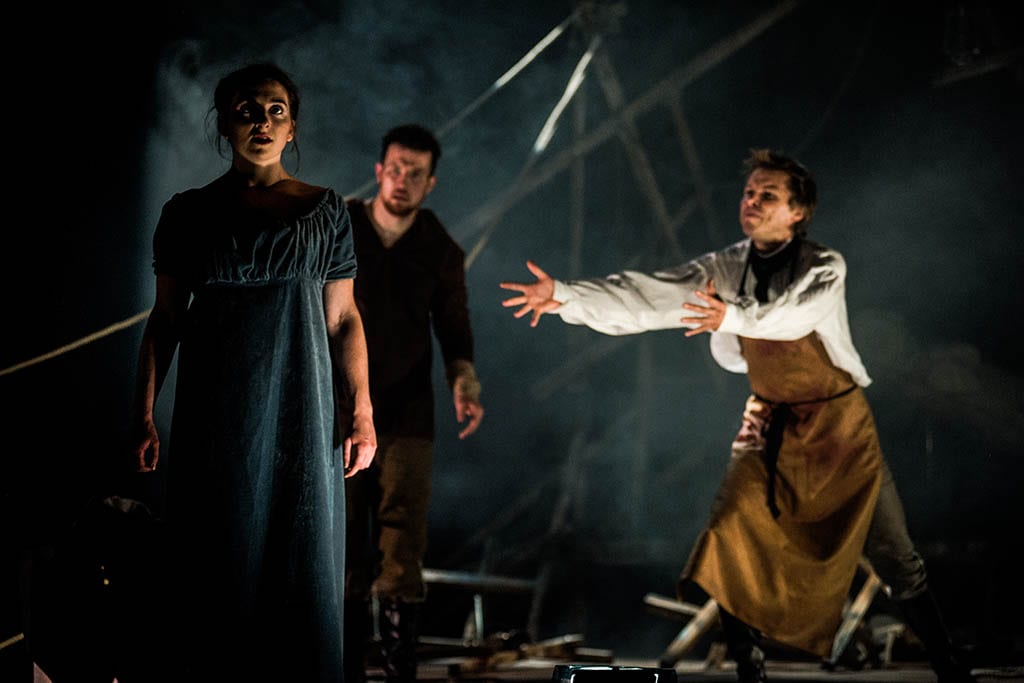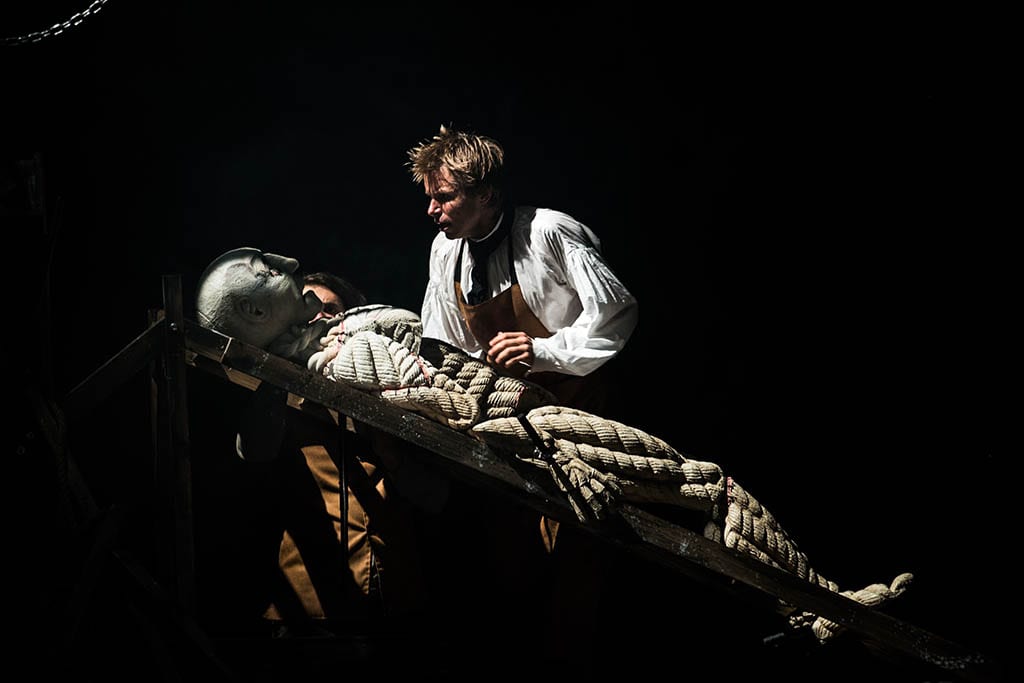Frankenstein’s gripping story of hubris, humanity and revenge has captured the imagination since 1818. The majority of dramatic adaptations focus on the Creature’s maturation, but this retelling is much closer to Mary Shelley’s original novel, focusing on the titular character.
The script is brave, in that it works with the novel’s narrative structure of Victor Frankenstein (Warwick) telling his story to an Arctic ship captain (Sean-Cook), starting from his idyllic beginnings and finishing in the empty horror of the frozen wastes. The framing structure is a little clumsy, but allows a constant character to perform scene changes and ask audience stand-in questions. The main problem here is that the production decides to dedicate almost it’s entire first half to Frankenstein’s life before animating his creation. The novel doesn’t give its supporting cast much dimension, but if the entire first half’s drama relies on Frankenstein’s relationships, you would hope that his loved ones would be fitted out better for performance, giving them more than archetypal, vague dialogue. The building drama feels underwhelming in staging and execution, so dialogue seems corny or pointless, with no sense of the mounting consequence its characters frequently mention. There are some interesting physicalisations and musical performances, but their small focus means they get lost on a stage the size of Greenwich Theatres, dampening their impact.
Line delivery is often bold but a little broad, making much of the first half trite, neither endearing you to the characters nor really providing too much essential backstory. Frankenstein eventually becomes an engaging character, but this may purely be due to the amount of time he spends talking to the audience. The actors make a solid enough job, but the script – mostly in the first half – is sorely lacking in engaging dialogue and events.
When we eventually meet the Creature, it is a wonderful moment. The ensemble animate his 6 foot puppet frame with a careful attention to detail at first, but he loses that awareness over the course of the performance. He blends in well with the set and works wonderfully, sparking off of Frankenstein and finally bringing his performance to life as well, but his posture is quite often neutral and lacking in tension, and the menace and power that his dialogue mentions could have been actually communicated through more dynamic poses and play on the fragmented set. The Creature’s physical engagements with characters are too tentative, but he always steals the scene. Labovitch gives him a wonderful voice, a wheezing groan that the other puppeteers occasionally join inn with, but I do feel like his stomach could have been a bit looser, allowing for accentuated postures and breathing. The second half mostly deals with the conflict between Victor and the Creature, and is more engaging for it.
The scripts use of the framing structure does just about work, but it completely informs the set. The set is a ramshackle structure of ladders, beams and ropes that is clambered over to set the tone for the ship, but is hardly used for many other dynamic scenes. It is impressive, but hugely underutilized. The live music elements are incredibly fitting, and the percussive background inspire the fear and tension that the performance as a whole can’t quite muster.
This Frankenstein is so close in so many ways to being a wonderful adaptation, It’s certainly enjoyable, but the combination of a patchy script, simplistic direction and poor pacing hobble the production’s potential, unfortunately leaving the audience slightly unfulfilled.




